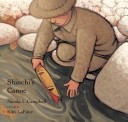
Forced to use only people’s English names and not speak to his siblings at school, Shin-chi holds fast to the canoe given to him by his father, hopeful that things will then improve for his family and the tribe he loves.
Historical Fiction genre

Forced to use only people’s English names and not speak to his siblings at school, Shin-chi holds fast to the canoe given to him by his father, hopeful that things will then improve for his family and the tribe he loves.

Nutaaq and her older sister, Aaluk, are on a great journey, sailing from a small island off the coast of Alaska to the annual trade fair. There, a handsome young Siberian wearing a string of cobalt blue beads watches Aaluk “the way a wolf watches a caribou, never resting.” Soon his actions—and other events more horrible than Nutaaq could ever imagine—threaten to shatter her I~nupiaq world. Seventy years later, Nutaaq’s greatgranddaughter, Blessing, is on her own journey, running from the wreckage of her life in Anchorage to live in a remote Arctic village with a grandmother she barely remembers. In her new home, unfriendly girls whisper in a language she can’t understand, and Blessing feels like an outsider among her own people. Until she finds a cobalt blue bead—Nutaaq’s bead—in her grandmother’s sewing tin. The events this discovery triggers reveal the power of family and heritage to heal, despite seemingly insurmountable odds. Two distinct teenage voices pull readers into the native world of northern Alaska in this beautifully crafted and compelling debut novel.
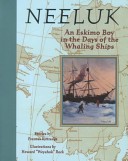
Weaving history, art and literature, these stories follow a young Inupiat Eskimo boy through a year of his life at the turn of the last century.
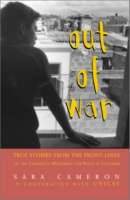
Through nine intimate first-person narratives, Out of War tells the story of the Children’s Movement for Peace, a network of organizations struggling against the forty-year civil war in Colombia. Readers will meet young people like Juan Elias, who decided he could best avenge his father’s murder by fighting to end the war; Maritza, who found refuge in the peace movement after her family and friends abandoned her in the communas of Medellin; and Beto, who works for the peace he never had in his abusive home. The voices of these children are raw and real, and their stories are nothing short of inspirational. In 1996, the Children’s Movement for Peace helped organize the Children’s Mandate, a referendum on children’s rights in Colombia. Two million children turned out to vote for their right to peace, sending the Colombian government a powerful message about its inability to control the violence within its borders. Since then, the Movement has worked to help children cope with loss, displacement, poverty, and other effects of the war. It has also taught children how to resolve conflict without fighting. The movement’s work is impressive, yet Out of War is really about the individual children who lead the group. Through them, readers will learn not only about the tenuous life of children in Colombia, but about what it means to give back to your community and face adversity with true courage and hope.
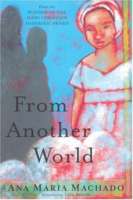
Martin and his friends are helping their parents turn an old Brazilian coffee plantation into an inn. The children have a fun time helping to renovate the old place and they sleep in a shed that is being converted into a guest room. But one night they hear the sound of a young girl crying. Gradually, the ghost of a slave girl from the late 1800s named Rosario appears to them. Rosario tells them the story of her life and in doing so reveals the danger and instability that existed in Brazil after slavery ended. Though not the best at writing, Martin promises Rosario to record her story in the form of a book. Though the experience of slavery seems remote to Martin and his friends, by the time they\’ve heard Rosario\’s story, the evil of slavery is made painfully clear. Ana Maria Machado’s deft storytelling skills and social conscience come together in this powerfully moving book that explores the history and impact of slavery.
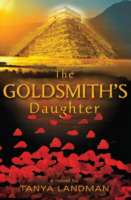
A bearer of doom, or a bringer of change? As the Aztec empire falls, one girl defies her destiny.In the golden city of Tenochtitlán, the people live in awe of Emperor Montezuma and in fear of blood-hungry gods. Under an ill-fated sky, a girl is born, facing a life of submission and domestic drudgery. But Itacate has a secret passion for goldwork, forbidden to women, and is forced to disguise her identity to protect herself and her family. When her city is shaken by Cortez’s invasion, Itacate challenges fate, culture, and faith by crafting golden statues — and pursuing the love of a man who should be her enemy. From the author of I AM APACHE comes a tale of clashing cultures, a rich and powerful depiction of Aztec life during the Spanish conquest of Mexico.
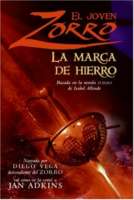
De niño, a Diego le interesaba más montar a caballo y hacer travesuras con su mejor amigo, Bernardo, que luchar contra la injusticia. No obstante, cuando comienzan a desaparecer algunos hombres del pueblo de los Ángeles y ganado del rancho del padre de Diego, él y Bernardo se topan con una injusticia tan grande que tienen que tomar acción.
Inspirada en la novela Zorro de Isabel Allende, que narra cómo Diego de la Vega se convirtió en el legendario héroe enmascarado, El joven Zorro: La marca de hierro introduce a los lectores a una tierra de vaqueros y secuestradores: un mundo lleno de emociones en el que se forma el joven héroe.
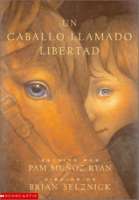
Based on the life of Charlotte Parkhurst, this rollicking adventure story traces the daring and unusual escapades of a real 1860’s girl who disguised herself as a man so she could live, work, and vote as she pleased.
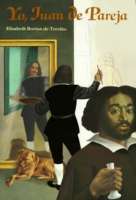
This Spanish translation of the historical novel I, Juan De Pareja is based on the life of Juan de Pareja, the black assistant to the 17th-century Spanish painter Velazquez. Newbery Medal Book.
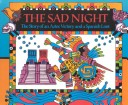
An account of the establishment of the Aztec empire in Mexico and of the terrible battle between the Aztecs and the Spaniards known as the Sad Night, of La Noche Triste.
“This sensitive treatment of La Noche Triste, or The Sad Night, the last battle the Aztecs won against the Spaniards, is a highly effective melding of graceful, lucid text and stylized art. Designed to resemble Aztec codices, the illustrations appear in double-page strips above the bordered text. Beginning with the Aztec migration to Tenochtitlán (now Mexico City), the history of this people is traced through their final conquest by Cortés’s forces…. This title has the distinction of combining myth with historical fact in a particularly successful manner. An engaging introduction to Mexican history.” —School Library Journal